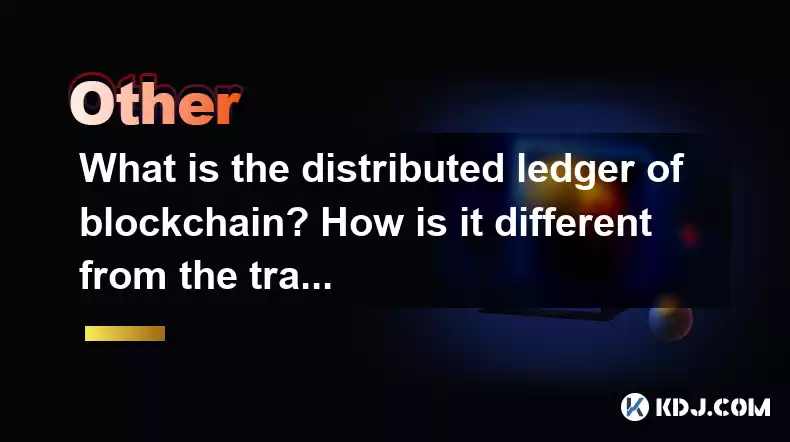-
 Bitcoin
Bitcoin $113900
-1.39% -
 Ethereum
Ethereum $3517
-4.15% -
 XRP
XRP $3.009
1.59% -
 Tether USDt
Tether USDt $0.9997
-0.04% -
 BNB
BNB $766.8
-1.41% -
 Solana
Solana $164.6
-2.38% -
 USDC
USDC $0.9998
-0.02% -
 TRON
TRON $0.3277
0.65% -
 Dogecoin
Dogecoin $0.2023
-1.67% -
 Cardano
Cardano $0.7246
0.05% -
 Hyperliquid
Hyperliquid $38.27
-4.77% -
 Sui
Sui $3.528
-0.52% -
 Stellar
Stellar $0.3890
-0.73% -
 Chainlink
Chainlink $16.16
-2.69% -
 Bitcoin Cash
Bitcoin Cash $539.9
-4.38% -
 Hedera
Hedera $0.2425
-2.00% -
 Avalanche
Avalanche $21.71
-0.97% -
 Toncoin
Toncoin $3.662
5.73% -
 Ethena USDe
Ethena USDe $1.000
-0.02% -
 UNUS SED LEO
UNUS SED LEO $8.964
0.35% -
 Litecoin
Litecoin $107.7
2.33% -
 Shiba Inu
Shiba Inu $0.00001223
-0.40% -
 Polkadot
Polkadot $3.617
-0.97% -
 Uniswap
Uniswap $9.052
-2.49% -
 Monero
Monero $295.1
-3.79% -
 Dai
Dai $0.9999
0.00% -
 Bitget Token
Bitget Token $4.315
-1.85% -
 Pepe
Pepe $0.00001060
0.11% -
 Cronos
Cronos $0.1342
-2.72% -
 Aave
Aave $256.0
-0.87%
What is the distributed ledger of blockchain? How is it different from the traditional ledger?
A distributed ledger in blockchain is a decentralized database shared across networks, ensuring transparency, security, and trust among participants.
Apr 29, 2025 at 12:49 am

The concept of a distributed ledger is central to understanding blockchain technology. A distributed ledger in the context of blockchain refers to a database of records that is shared and synchronized across multiple devices, networks, or participants. Unlike a traditional ledger, which is typically maintained by a single entity, a distributed ledger is managed by a network of computers, ensuring that no single point of failure or control exists. This decentralized nature of the ledger is what makes blockchain technology revolutionary, as it allows for greater transparency, security, and trust among participants.
How a Distributed Ledger Works in Blockchain
In blockchain, a distributed ledger functions through a series of blocks, each containing a list of transactions. These blocks are linked together using cryptographic hashes, forming a chain. Each participant in the network maintains a copy of the entire ledger, and any changes or new transactions must be verified and agreed upon by the majority of the network before they are added to the ledger. This consensus mechanism is crucial for maintaining the integrity and security of the ledger.
Differences from Traditional Ledgers
Traditional ledgers, often used in banking and accounting, are centralized and controlled by a single authority. This centralization can lead to several issues, such as a single point of failure, vulnerability to fraud, and lack of transparency. In contrast, a distributed ledger in blockchain eliminates these risks by spreading the control and responsibility across a network of participants. This decentralization not only enhances security but also ensures that the ledger is transparent and immutable, meaning once data is recorded, it cannot be altered or deleted.
Key Features of Distributed Ledgers in Blockchain
Several key features distinguish distributed ledgers in blockchain from traditional ledgers:
- Decentralization: The ledger is not controlled by any single entity but is maintained by a network of participants.
- Transparency: All participants have access to the entire ledger, promoting trust and accountability.
- Immutability: Once data is recorded on the ledger, it cannot be changed, ensuring the integrity of the data.
- Security: The use of cryptographic techniques and consensus mechanisms makes the ledger highly secure against unauthorized changes.
Practical Applications of Distributed Ledgers in Cryptocurrency
The most well-known application of distributed ledgers is in cryptocurrencies like Bitcoin and Ethereum. In these systems, the distributed ledger serves as the backbone for recording and verifying transactions. For instance, when a user sends Bitcoin to another user, the transaction is broadcast to the network, verified by nodes, and then added to a block. Once the block is added to the blockchain, the transaction becomes part of the permanent record.
Technical Aspects of Maintaining a Distributed Ledger
Maintaining a distributed ledger involves several technical processes:
- Node Operation: Each node in the network maintains a copy of the ledger and participates in the validation and propagation of new transactions.
- Consensus Mechanisms: Different blockchain networks use various consensus mechanisms, such as Proof of Work (PoW) or Proof of Stake (PoS), to agree on the state of the ledger.
- Cryptography: Cryptographic hashes and digital signatures are used to secure the data and ensure that transactions are valid and from authorized parties.
How to Interact with a Distributed Ledger in Blockchain
For users who want to interact with a distributed ledger, such as sending or receiving cryptocurrency, the process involves several steps:
- Choose a Wallet: Select a cryptocurrency wallet that supports the blockchain you want to interact with. Wallets can be software-based (hot wallets) or hardware-based (cold wallets).
- Set Up the Wallet: Follow the wallet provider's instructions to set up your wallet. This usually involves creating a new address and securing it with a private key or seed phrase.
- Fund the Wallet: Deposit funds into your wallet, either by purchasing cryptocurrency from an exchange or receiving it from another user.
- Initiate a Transaction: Use the wallet interface to send cryptocurrency to another address. Enter the recipient's address and the amount you want to send, then confirm the transaction.
- Wait for Confirmation: The transaction will be broadcast to the network and needs to be verified and added to a block. Once confirmed, the transaction is recorded on the distributed ledger.
The Role of Smart Contracts in Distributed Ledgers
Smart contracts are self-executing contracts with the terms directly written into code. They run on blockchain platforms like Ethereum and are stored on the distributed ledger. Smart contracts automate transactions and enforce agreements without the need for intermediaries, further enhancing the efficiency and trust in the system. When a smart contract is executed, the outcome is recorded on the ledger, ensuring transparency and immutability.
Challenges and Considerations
While distributed ledgers offer numerous advantages, they also come with challenges. Scalability is a significant concern, as the more participants in the network, the more complex it becomes to reach consensus and process transactions efficiently. Additionally, the energy consumption associated with some consensus mechanisms, like Proof of Work, has raised environmental concerns. It's important for users and developers to consider these factors when working with blockchain technology.
Frequently Asked Questions
Q: Can a distributed ledger be hacked?
A: While distributed ledgers are highly secure due to their decentralized nature and cryptographic protections, they are not entirely immune to attacks. The most common threats include 51% attacks, where a group gains control of the majority of the network's mining power, and phishing attacks targeting individual users. However, the likelihood of successfully hacking a well-established blockchain like Bitcoin or Ethereum is extremely low.
Q: How does a distributed ledger ensure privacy?
A: Distributed ledgers in blockchain often use pseudonymous addresses to protect user privacy. While the transactions are transparent and visible to all participants, the identities of the users are not directly linked to their addresses. Additionally, some blockchains offer privacy features like zero-knowledge proofs or ring signatures to enhance privacy further.
Q: What happens if there is a disagreement in the network about the state of the ledger?
A: In the event of a disagreement, the network relies on its consensus mechanism to resolve the issue. If a majority of the nodes agree on a particular state of the ledger, that version becomes the accepted one. In rare cases, if the network cannot reach a consensus, it may result in a fork, where the blockchain splits into two separate chains, each with its own version of the ledger.
Q: Are there any regulatory challenges associated with using distributed ledgers?
A: Yes, regulatory challenges are significant in the use of distributed ledgers, particularly in the cryptocurrency space. Different countries have varying regulations regarding cryptocurrencies and blockchain technology, which can impact their use and adoption. Users and businesses must stay informed about the legal framework in their jurisdiction to ensure compliance.
Disclaimer:info@kdj.com
The information provided is not trading advice. kdj.com does not assume any responsibility for any investments made based on the information provided in this article. Cryptocurrencies are highly volatile and it is highly recommended that you invest with caution after thorough research!
If you believe that the content used on this website infringes your copyright, please contact us immediately (info@kdj.com) and we will delete it promptly.
- Bitcoin Strategy: Saylor's Not Hoarding, He's Building an Empire
- 2025-08-02 22:30:12
- Bitcoin Bloodbath: Macro Pressures and Liquidations Unleash Crypto Chaos
- 2025-08-02 22:30:12
- Worldcoin, Identity, WLD Price: Decoding the NYC Crypto Buzz
- 2025-08-02 21:10:12
- Shiba Inu: Utility and Community Strength Drive Crypto's Evolution
- 2025-08-02 21:50:12
- Crypto Donations, Trump PAC, and Bitcoin: A New York Minute on Political Coin
- 2025-08-02 20:30:12
- Crypto Market Under Pressure: Bearish Momentum and Rising Volatility Take Hold
- 2025-08-02 20:30:12
Related knowledge

What is the difference between on-chain and off-chain transactions?
Aug 02,2025 at 04:22pm
Understanding On-Chain TransactionsOn-chain transactions refer to digital asset transfers that are recorded directly on a blockchain ledger. These tra...

What is the double-spending problem and how does blockchain prevent it?
Aug 02,2025 at 01:07pm
Understanding the Double-Spending ProblemThe double-spending problem is a fundamental challenge in digital currency systems where the same digital tok...

What is the difference between a blockchain and a database?
Aug 01,2025 at 09:36pm
Understanding the Core Structure of a BlockchainA blockchain is a decentralized digital ledger that records data in a series of immutable blocks linke...

How does blockchain handle scalability?
Aug 02,2025 at 02:58pm
Understanding Blockchain Scalability ChallengesBlockchain scalability refers to a network's ability to handle an increasing volume of transactions wit...

What is a hash in a blockchain?
Aug 02,2025 at 05:28am
Understanding the Concept of Hash in BlockchainA hash in the context of blockchain technology refers to a unique digital fingerprint generated by a cr...

What is a hash in a blockchain?
Aug 02,2025 at 04:43am
Understanding the Concept of Hash in BlockchainA hash in the context of blockchain technology refers to a unique digital fingerprint generated by a cr...

What is the difference between on-chain and off-chain transactions?
Aug 02,2025 at 04:22pm
Understanding On-Chain TransactionsOn-chain transactions refer to digital asset transfers that are recorded directly on a blockchain ledger. These tra...

What is the double-spending problem and how does blockchain prevent it?
Aug 02,2025 at 01:07pm
Understanding the Double-Spending ProblemThe double-spending problem is a fundamental challenge in digital currency systems where the same digital tok...

What is the difference between a blockchain and a database?
Aug 01,2025 at 09:36pm
Understanding the Core Structure of a BlockchainA blockchain is a decentralized digital ledger that records data in a series of immutable blocks linke...

How does blockchain handle scalability?
Aug 02,2025 at 02:58pm
Understanding Blockchain Scalability ChallengesBlockchain scalability refers to a network's ability to handle an increasing volume of transactions wit...

What is a hash in a blockchain?
Aug 02,2025 at 05:28am
Understanding the Concept of Hash in BlockchainA hash in the context of blockchain technology refers to a unique digital fingerprint generated by a cr...

What is a hash in a blockchain?
Aug 02,2025 at 04:43am
Understanding the Concept of Hash in BlockchainA hash in the context of blockchain technology refers to a unique digital fingerprint generated by a cr...
See all articles

























































































